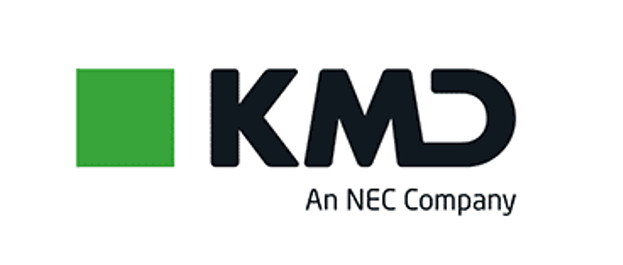My experience as a Self-employed Business Owner
In this article, Magnus NIELSEN (ESSEC Business School, European Management Track, 2023-2024) shares his professional experience as an entrepreneur and Business Owner.
About the company
Pilot Education ApS is a Danish aviation consultancy company that I founded in 2019.
The company originated as a vision to establish a flight school. Specializing in pilot training and revalidation services, my company initially focused on ensuring the continued proficiency of pilots through regular license revalidation processes, as well as the training of new student pilots.
As I delved deeper into the aviation industry and advanced in my studies at Copenhagen Business School, the company’s scope evolved. Expanding beyond traditional pilot training, the company began to establish connections with various stakeholders in the aviation sector. This growing network allowed me to provide valuable non-pilot services, transforming the company into a small dynamic aviation consultancy.
Presently, Pilot Education ApS is still a new player in the aviation consulting landscape, offering a range of services to small and medium-sized companies within the industry, and mostly to Danish firms. The company’s core areas of expertise include cost optimization, addressing strategic concerns, streamlining operational processes, and focusing on services that enhance overall value for its clients. As one might hear, this comprises typical and commonly encountered elements within the consulting sector. Nothing different about it, just in a much smaller scale compared to the large consulting firms, such as McKinsey and Bain and Company.
Pilot Education ApS has carved a niche for itself by combining practical aviation knowledge with business acumen. This unique approach has positioned the company as a trusted advisor in the Danish aviation sector, providing tailored solutions to meet the diverse needs of its clients.
I attempted to gradually foster the growth of the company; however, this endeavor was swiftly hindered by the impact of COVID-19 (which hit the aviation sector extremely hard) and time constraints arising from my academic commitments. Consequently, I faced a dilemma between maintaining academic performance and pursuing the expansion of the small consulting firm specializing in aviation. I choose the first option.
Working with the company has provided me with diverse experience across a variety of segments within the sector. This includes involvement with entities engaged in air travel (airlines), aviation mechanics, ground handling, and even organizations contributing to the education of air traffic controllers.
Similarly, through the company and its connections with clients and customers, I have had the opportunity to travel not only within Denmark but also to various parts of Scandinavia and Northern Europe. This has all been very valuable for me personally, and a unique way to work besides my university studies, allowing me to integrate practical experiences with theoretical knowledge and giving a holistic approach to my professional development.
Evolution and Expertise
“Be the master of one’s own destiny.”
As the company grew, I encountered the need for a deeper understanding of Danish tax law, and corporate law particularly during the transition from “sole proprietorship to a limited liability company”. This strategic shift was prompted by the company’s growth, underscoring the importance of adapting to evolving business needs and legal considerations. As Denmark is the best country for business in (Forbes 2021), it is easy to get advice from the government and municipalities. In the beginning I did all accounting myself, but quickly found it difficult to cope with all the tax rules and tax deduction/credit. Thus, I found the need to employ an accountant and a bookkeeper. I could then focus on core business tasks, while getting advice on financials by the accountant. Likewise, the annual report is also prepared and filled by the accountant.
Operating a consultancy firm demands a versatile skill set, as one must navigate various aspects of the aviation sector, handle client interactions directly, and manage the complexities of Danish business regulations. This multifaceted role involves not only consulting services but also to understand and comply with legal frameworks governing business structures and taxation.
Entrepreneurial Responsibilities
In contrast to traditional student assistant roles, where tasks may be more narrowly defined, the responsibility of running a small consultancy falls squarely on the entrepreneur. Direct client engagement is a key aspect, requiring a proactive approach to meet client expectations, secure projects, and ensure the successful delivery of services.
The entrepreneurial journey involves not just technical expertise but also resilience, adaptability, and a relentless commitment to client satisfaction. In the competitive field of aviation consultancy, success is contingent upon the ability to proactively pursue opportunities, work diligently, and deliver tangible results. It’s a journey where the dedication to achieving professional goals goes hand in hand with the responsibility of running a business. One must be the
My missions
Client Engagement
- Directly responsible for client interactions
- Proactively pursue opportunities to secure projects
- Ensure client satisfaction through attentive and responsive interactions
Evolution and connections
- Expanded the company’s scope beyond traditional pilot training
- Establish connections with various stakeholders in the aviation sector
Entrepreneurial Responsibilities
- Manage diverse aspects of the aviation sector
- Navigate legal frameworks and comply with business regulations
Adaptability and Resilience
- Demonstrate adaptability in response to challenges, such as the impact of COVID-19
- Balancing academic commitments while fostering company growth
Required skills and knowledge
Operating a small company requires skills and knowledge that extend beyond conventional boundaries. One must not merely adhere to established norms but instead think innovatively, always ready to step out of the box and explore uncharted territories. The ability to think creatively is paramount, to uncover solutions and pathways that may not have been immediately apparent. In my experience I’ve learned that the capacity to think beyond traditional approaches is a key driver of success. Initially I didn’t expect to end up in the consulting world. But, when I saw the opportunity, I went for it.
Whether navigating legal transitions, devising strategies for cost optimization, or engaging with clients in the aviation sector, thinking outside the box has proven essential. It involves not just following a set path but actively seeking unexplored avenues, fostering adaptability, and finding solutions to challenges that may not have been initially apparent. If you do not like to do so, the lifestyle may not be for you.
It is crucial to bear in mind that in a small company, you represent the face of the business. You are intricately connected to every facet of the company’s operations and must actively participate in all activities that the company undertakes.
What I learned
Tax advantages in a limited liability company
- Investment tax credit
- Income split. One can choose to pay salary to the owner but may instead focus on the benefits to distribute profit as “dividends”
- Tax deferral delay paying taxes on income until a later date, provides additional cash flow, that can be used in projects or in passive investments such as treasury bills
Financial Management and Planning:
- Owning a company has provided insights into effective financial management, including budgeting, forecasting, and strategic allocation of resources to ensure sustained growth.
Regulatory Compliance and Legal Understanding:
- Managing a business involves navigating legal frameworks and ensuring compliance with regulations. Learning about legal structures, and industry-specific regulations has become integral to the day-to-day operations. While it requires time to grasp, once mastered, it can become a valuable asset for the owner’s advantage.
Financial concepts related my internship
Game Theory Analysis
Game Theory, a branch of mathematics that analyzes strategic interactions between rational decision-makers, provides an advanced framework to model and understand the complex dynamics of airline alliances in the aviation sector. Despite the high level of competitiveness in the industry, and despite the impact of inflation leading to overall price increases, the cost of plane tickets has remained relatively stable, comparable to the prices observed three years ago.
The application of Game Theory to airline alliances involves the study of strategic interactions among airlines. Each client (airline) pursues its own interest in a very competitive environment.
Modeling the Strategic Interaction
The Nash Equilibrium, a central concept in Game Theory, represents a state in which no player has an incentive to unilaterally deviate from their chosen strategy. In the context of alliances, the Nash Equilibrium can be determined by analyzing the reaction functions of each airline to the other’s strategy.
The strategic considerations go beyond quantity decisions. Airlines must also strategically determine pricing, route allocation, and capacity sharing. These decisions can be incorporated into the game model to provide a more comprehensive analysis of the strategic landscape. Sometimes I try to quantify the Nash equilibrium, other times you should just keep it in your mind, and then look into strategy in a broader sense (not quantified). For instance, Ryanair is extremely good at providing low-cost air fares. While a customer choosing Air France, might expect more quality or at least a larger selection of flights to his/her destination.
Capital Structure optimization
Within the industry, a growing trend among airlines is the preference for leasing over direct purchases. This shift in approach calls for a thorough reassessment of fundamental business operations. The utilization of foundational financial modeling techniques, such as Discounted Cash Flow (DCF) analysis, becomes essential in making well-informed decisions when weighing the options between leasing and purchasing.
While calculating the Net Present Value (NPV) might be straightforward, accurately estimating the relevant parameters and acknowledging their uncertainties poses a more intricate challenge. To address this, I designate each parameter as a stochastic variable and conduct multiple simulations to compare NPVs across various leasing and acquisition scenarios.
By integrating statistical methodologies into corporate finance, a more nuanced and informed decision-making process emerges. This approach enhances the accuracy of predictions, allowing for a more robust evaluation of leasing versus acquiring propositions in the dynamic landscape of the aviation industry. Navigating the details of debt financing terms and adhering to covenants is also paramount in the process. The objective is not only to secure operational flexibility for aviation-related activities but also to ensure alignment with financial agreements and covenants.
In the end, it is the management of the respective company that makes decisions based on their strategic intuition, complemented by data and suggestions compiled by my company.
Why should I be interested in this post?
Entrepreneurial Exposure: The entrepreneurial journey of a business owner, and how you should shed light on the challenges and triumphs of managing your own firm. This firsthand experience is invaluable for anyone interested in finance, as it provides insights into the financial intricacies of running your own business.
Financial Management: The aspects of running a company, including budgeting, forecasting, and strategic resource allocation. These financial management skills are directly applicable to finance roles, where expertise in budgeting and strategic financial planning is highly sought after.
Application of Financial Concepts: If one is interested in applying financial concepts learned at ESSEC or another top Business School, directly into business related challenges, while being the sole responsible to the results. Then you need to consider starting you own minor company.
Versatile Skill Development: Operating a consultancy necessitates a diverse skill set, including financial management, client engagement, and legal understanding. The development and application of such skills is crucial to survive against competitors.
Remember that when being a business owner, you cannot hide behind an excel sheet. You are the sole responsible for the survival and growth of your company and your wealth.
Related posts on the SimTrade blog
▶ All posts about Professional experiences
▶ Alexandre VERLET Classic brain teasers from real-life interviews
▶ Jayati WALIA Stress Testing used by Financial Institutions
▶ Shengyu ZHENG Les distributions statistiques
▶ Anna BARBERO Career in finance
Useful resources
Denmark Tops List Of Best Countries For Business
Business demography statistics
About the author
The article was written in December 2023 by Magnus NIELSEN (ESSEC Business School, European Management Track, 2023-2024).






